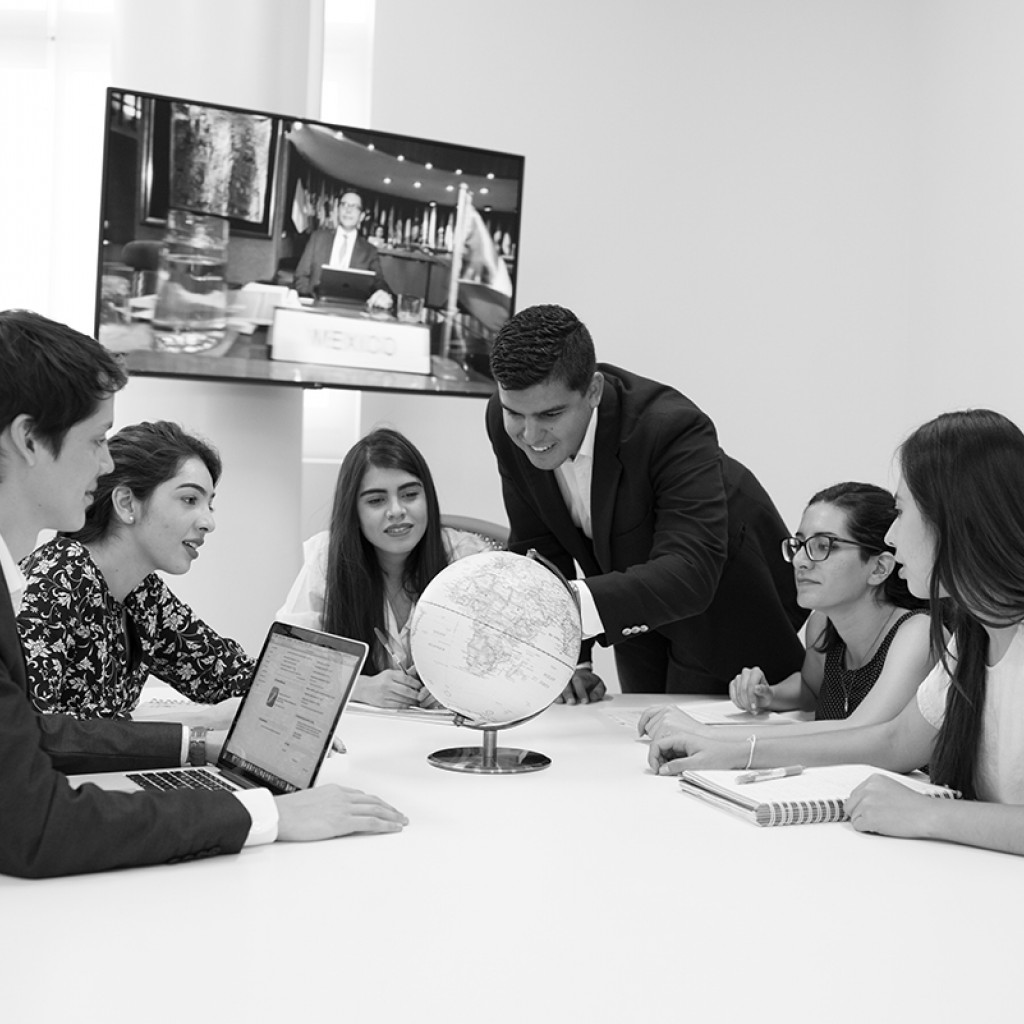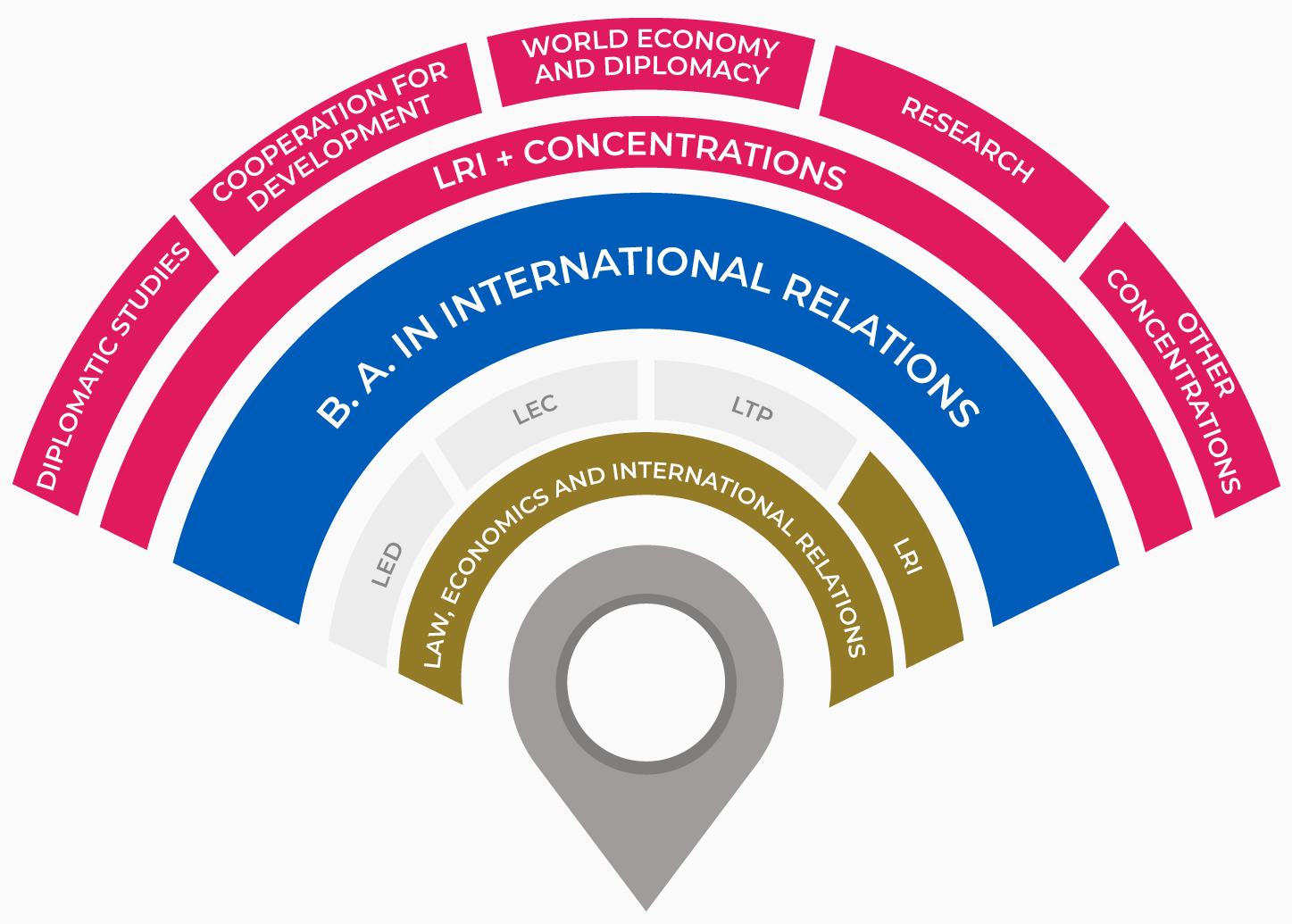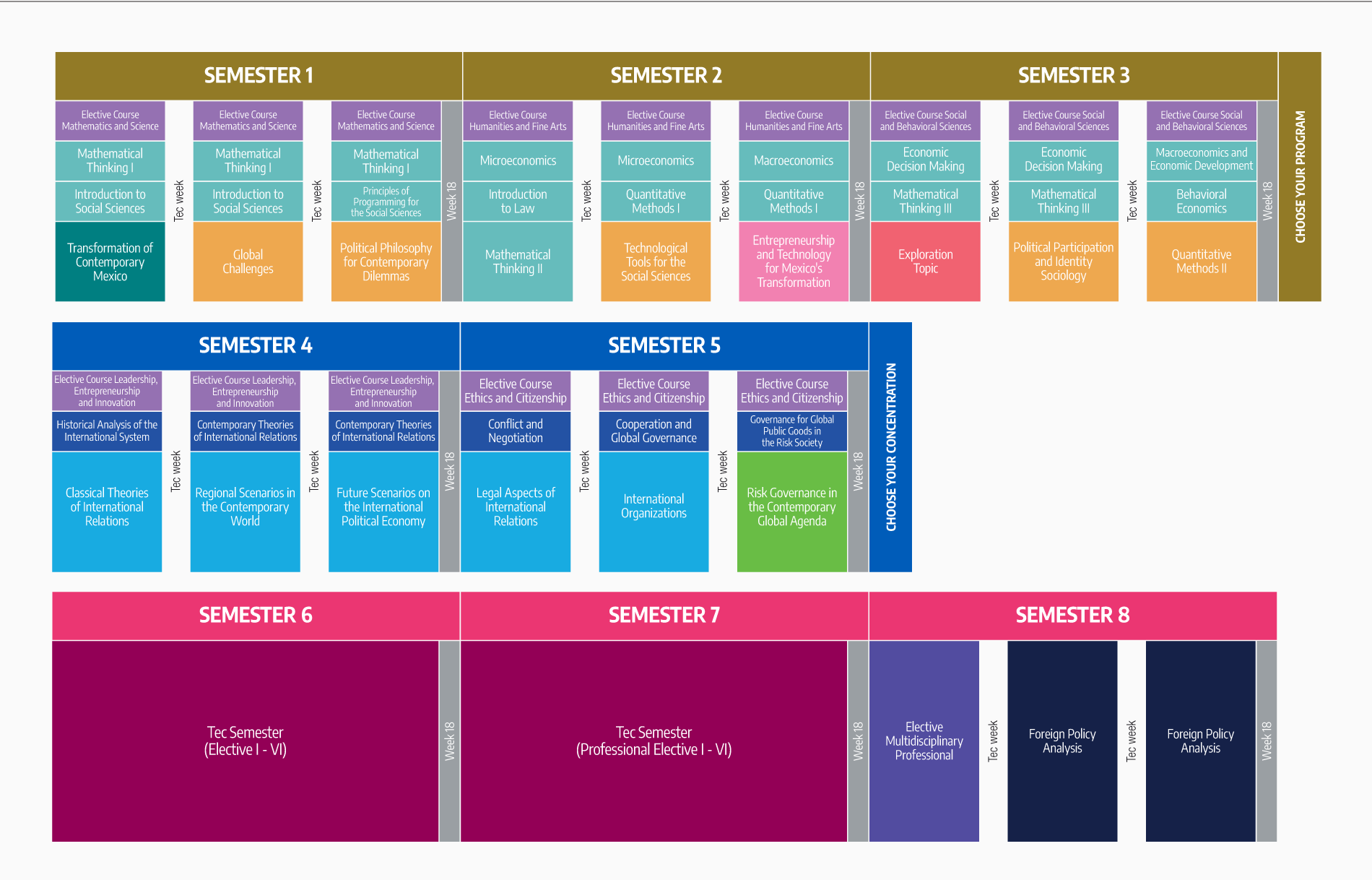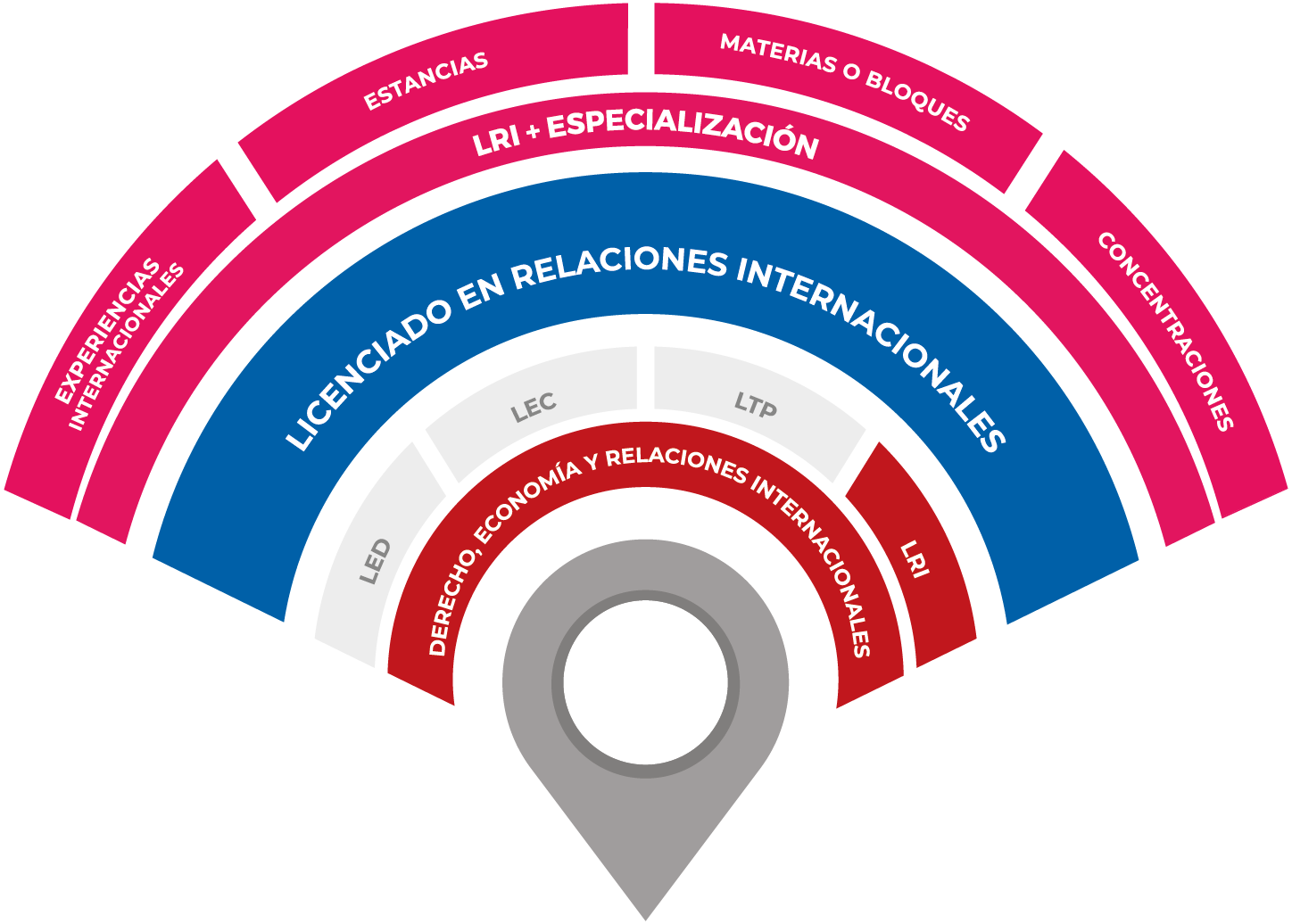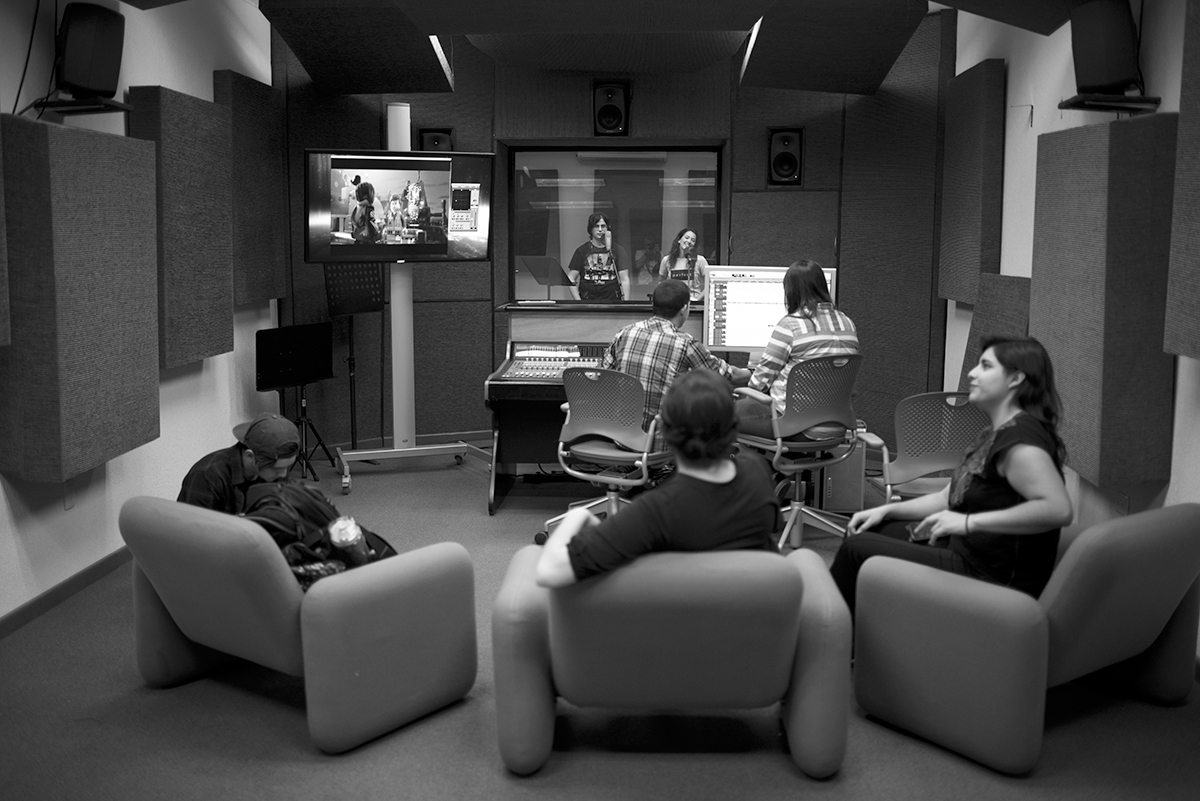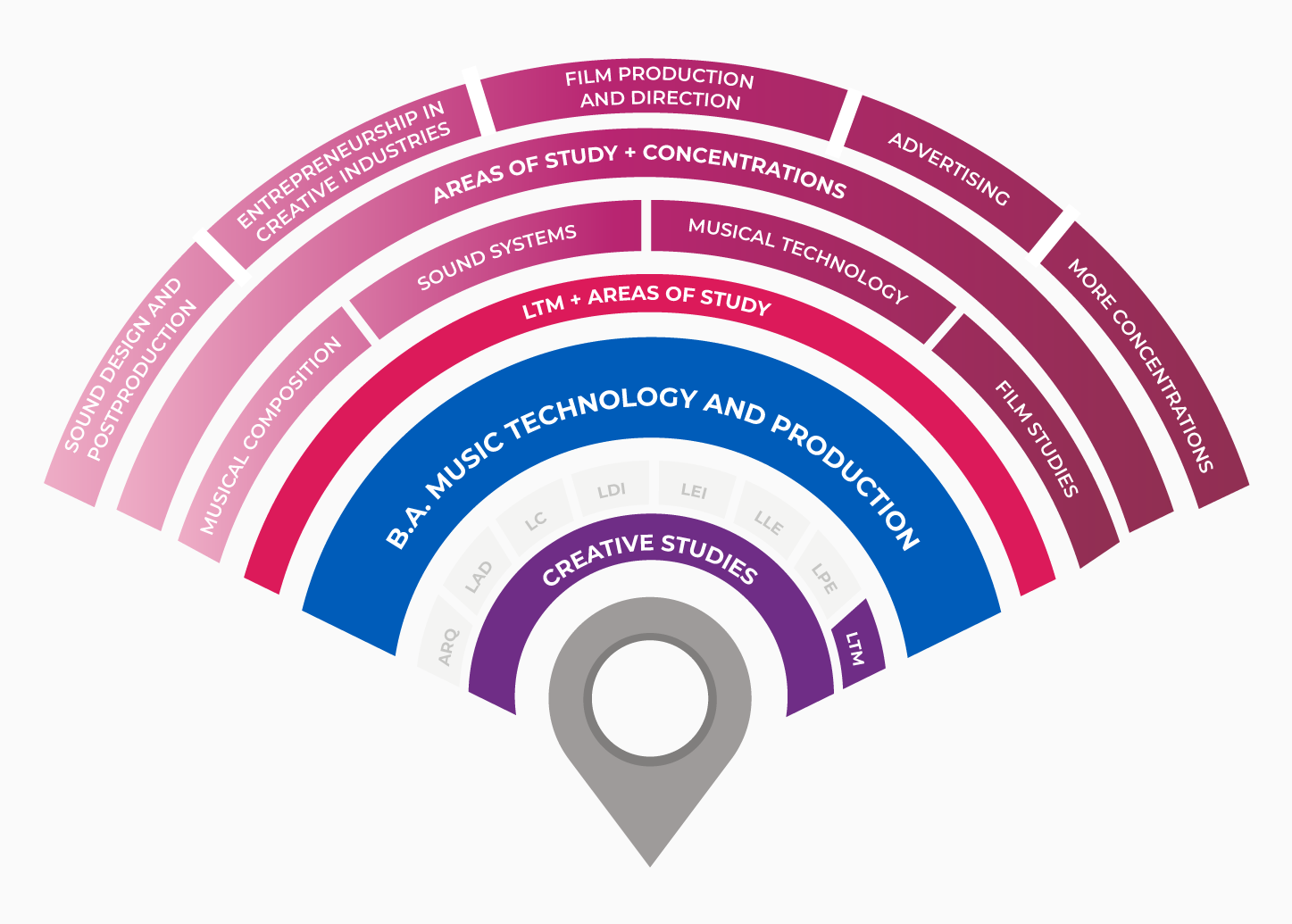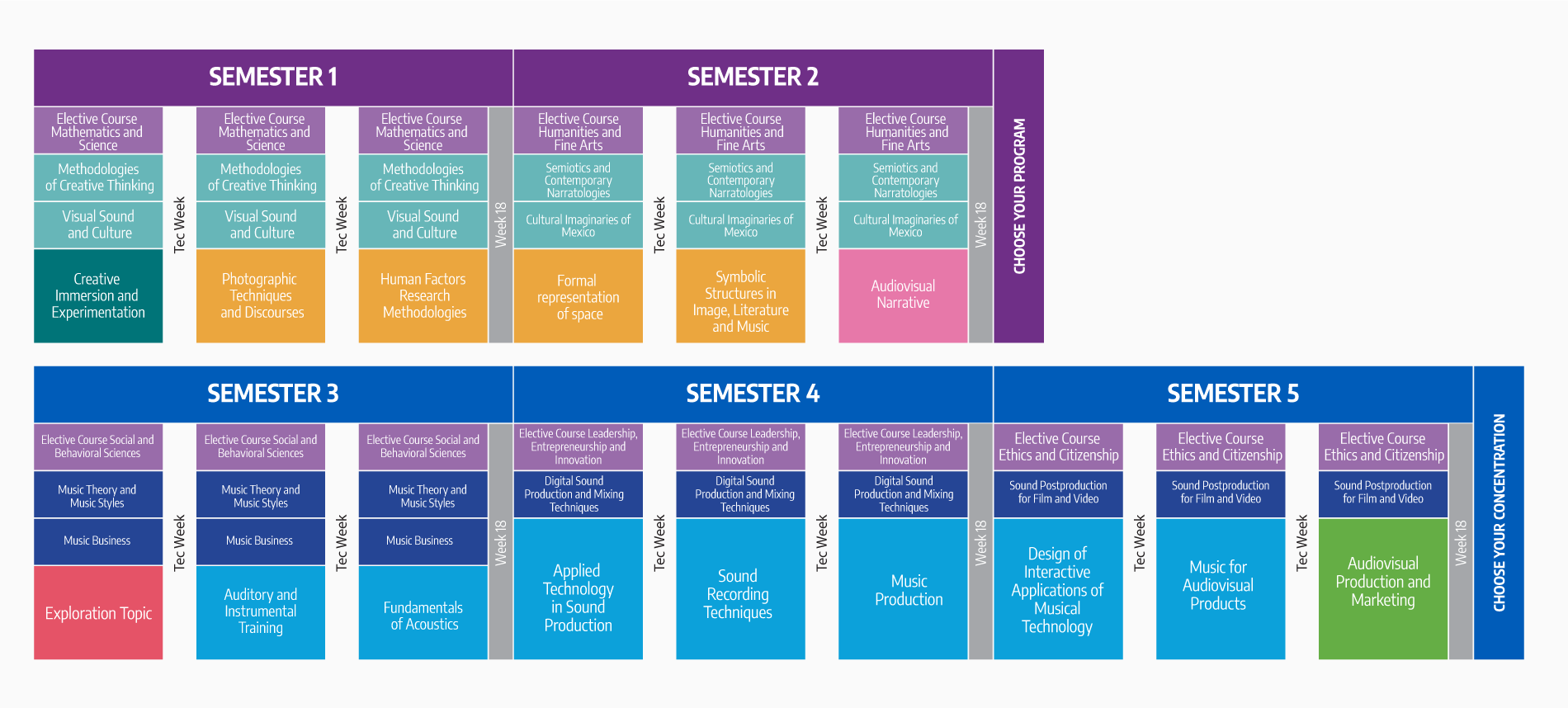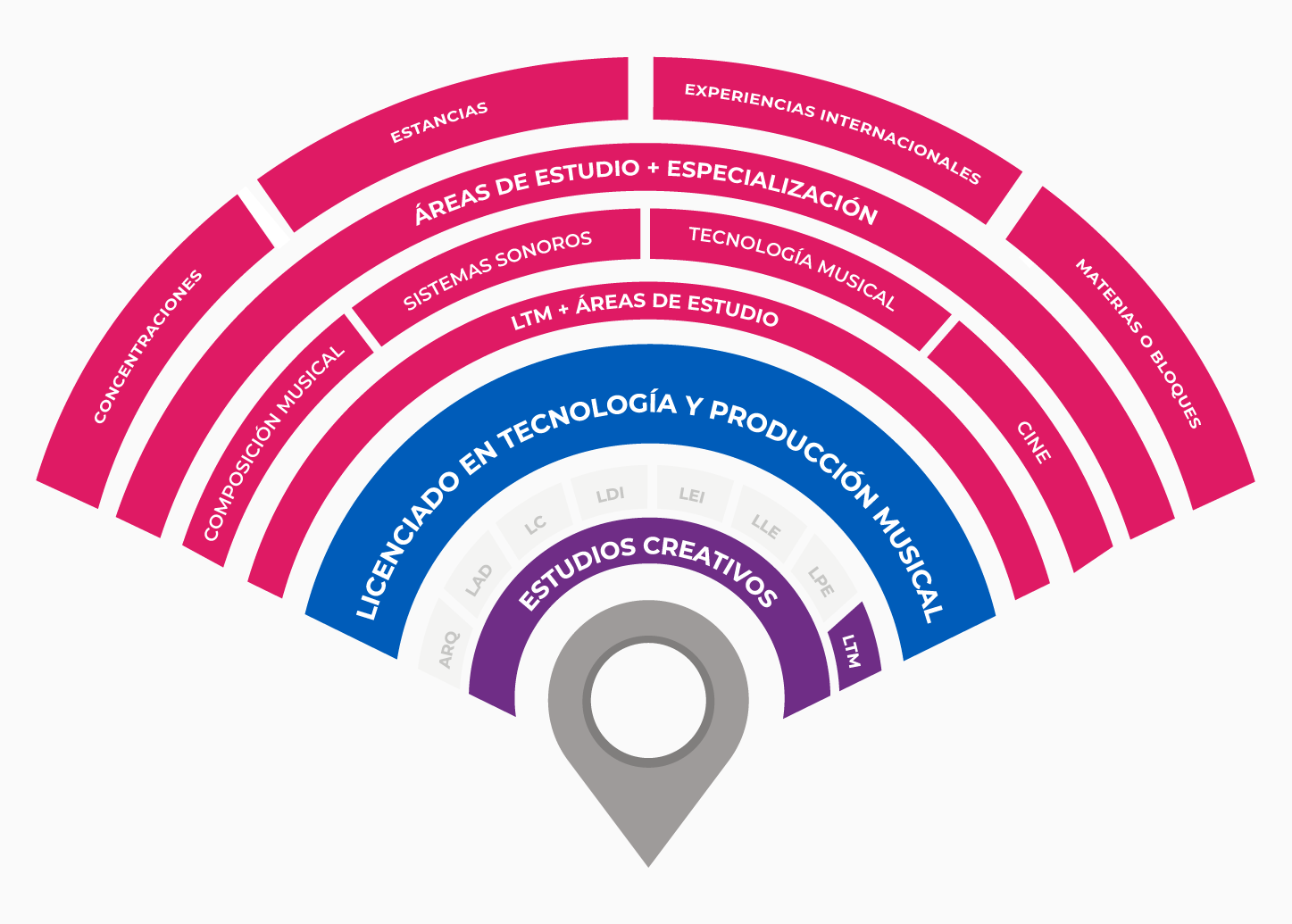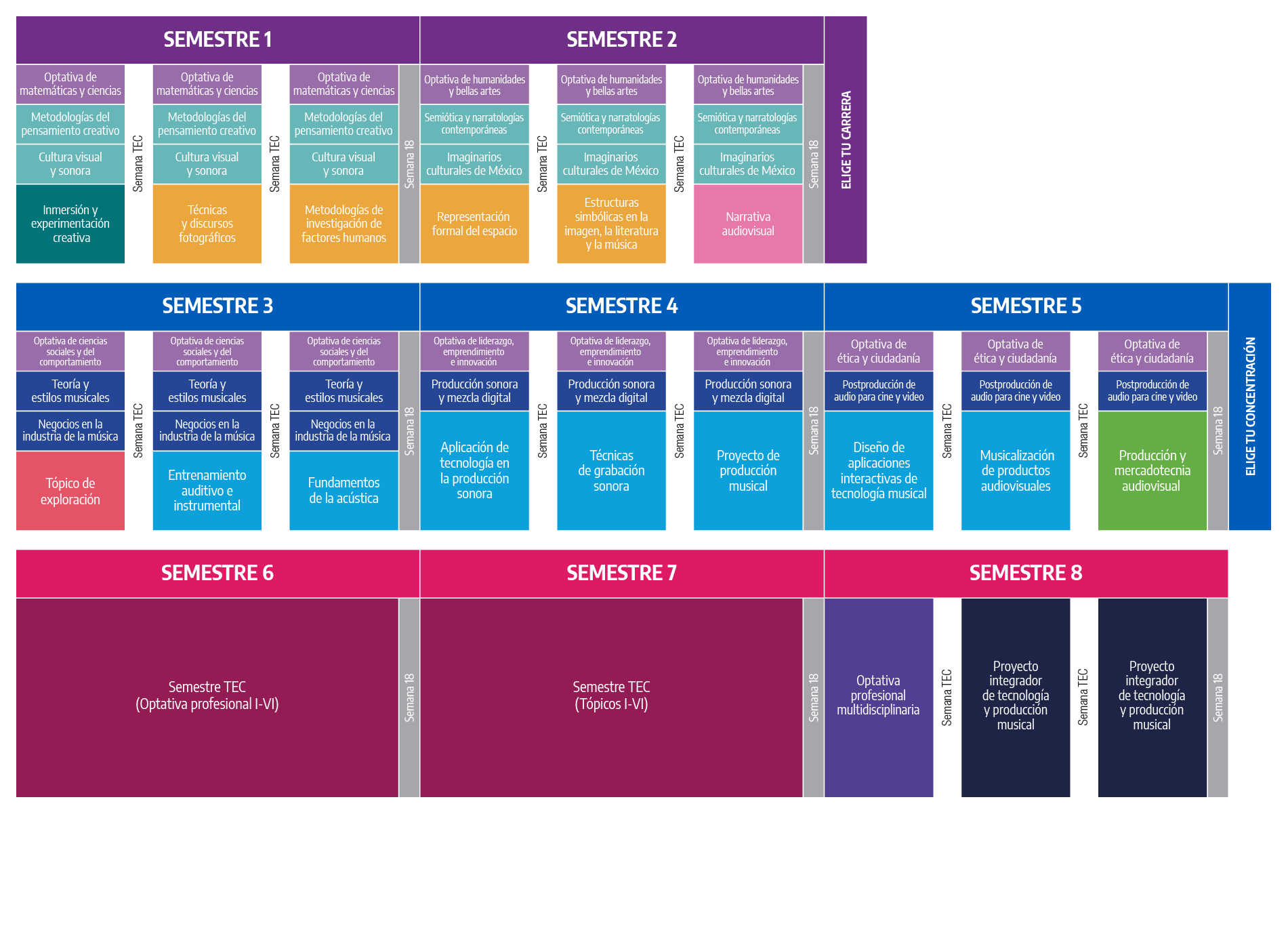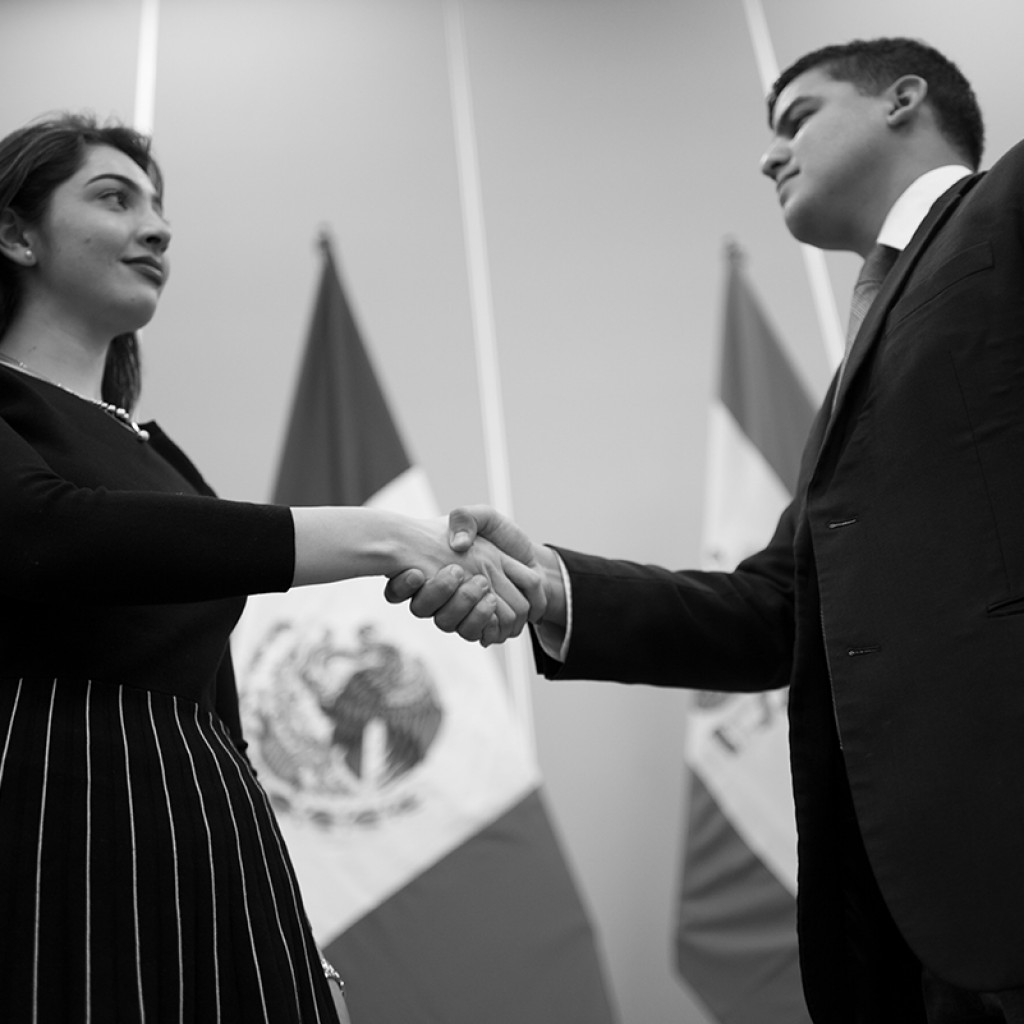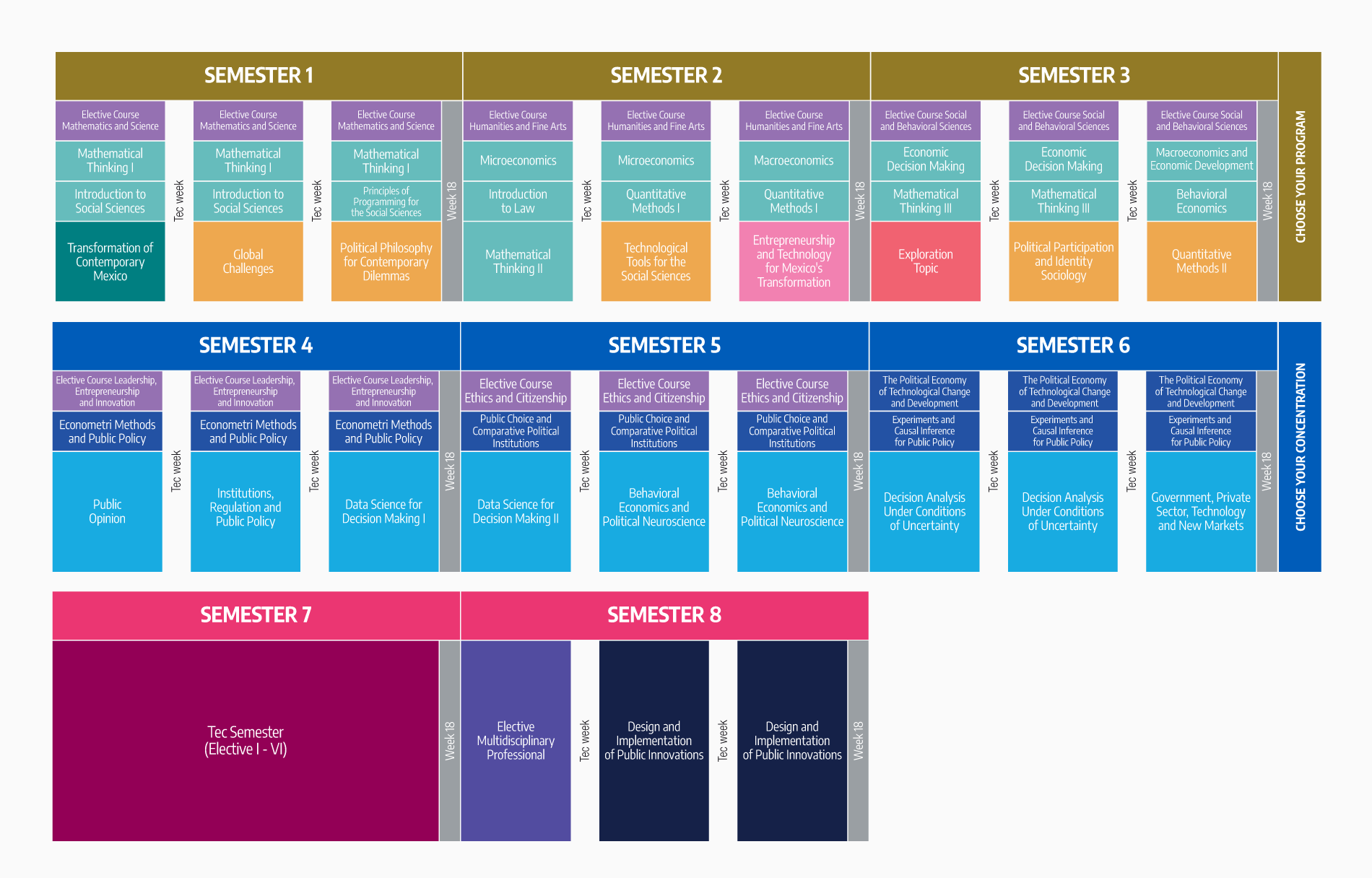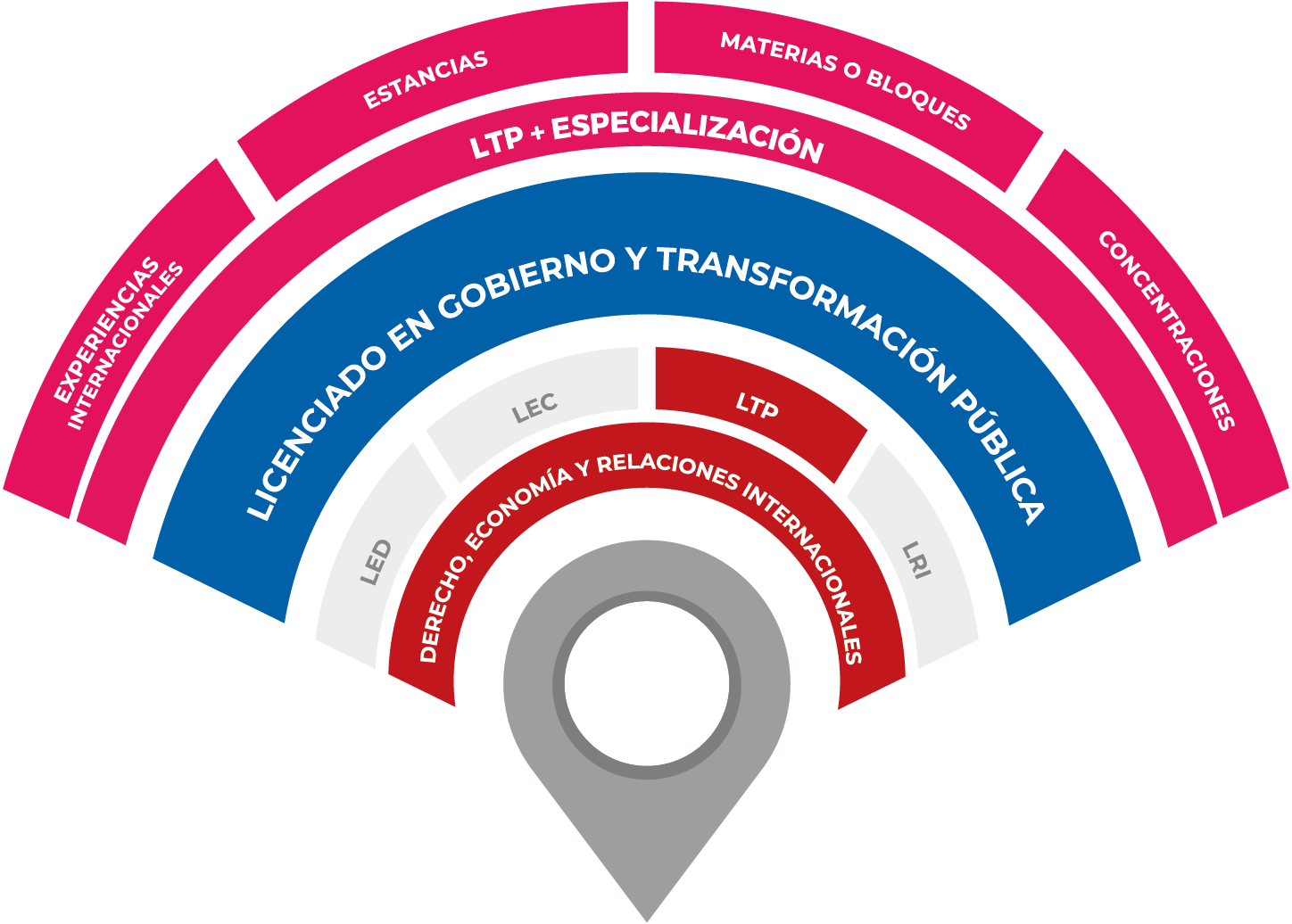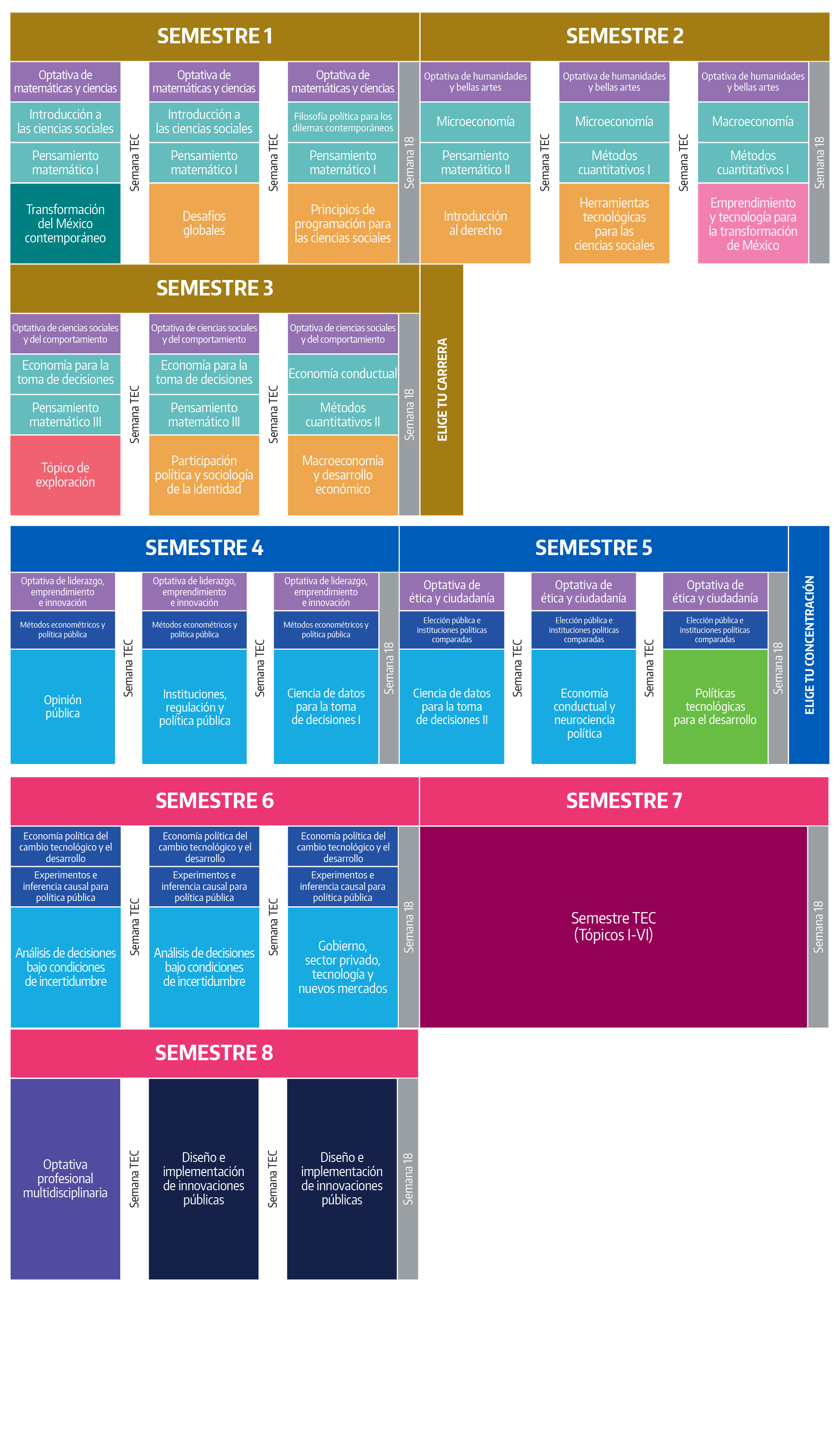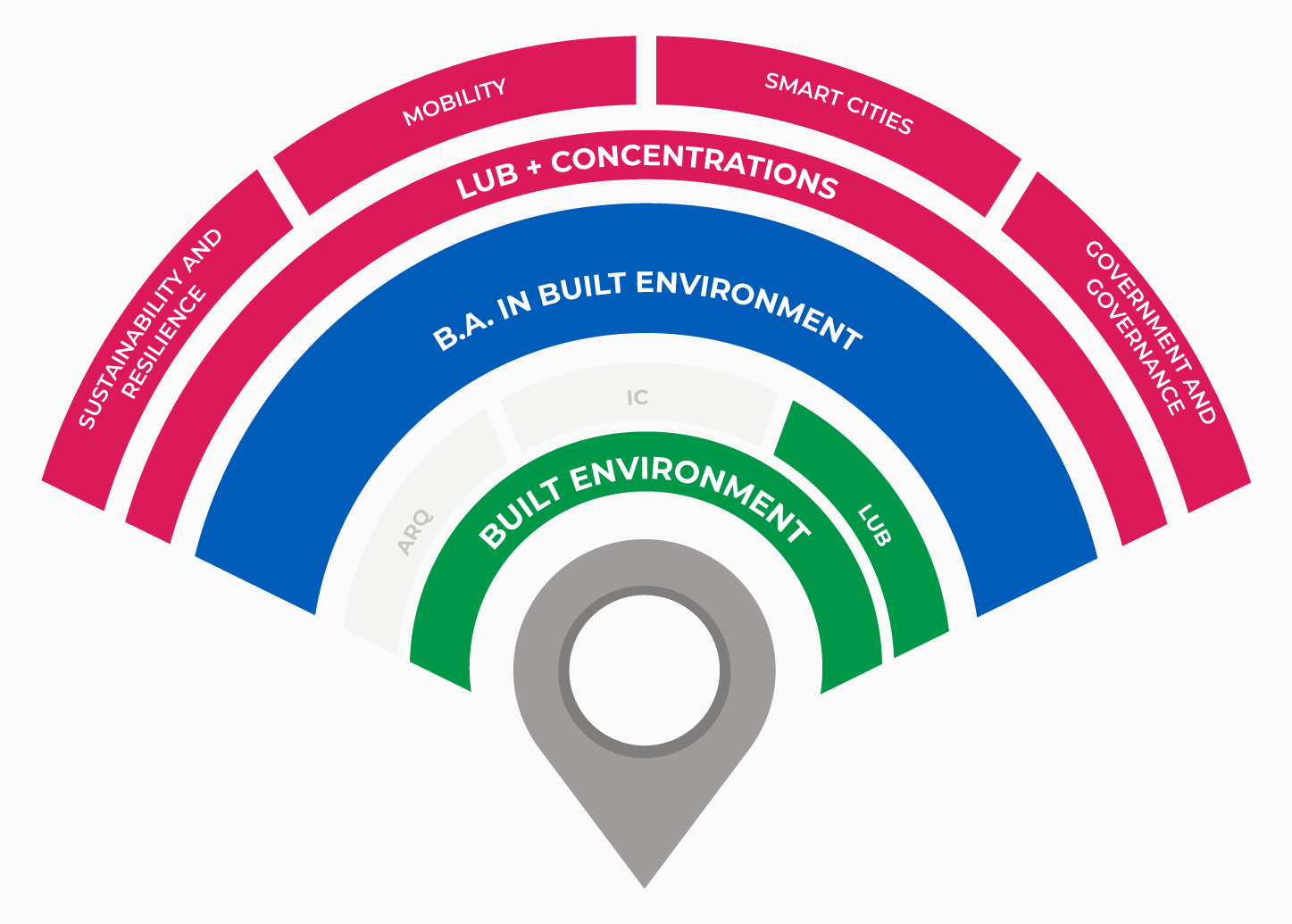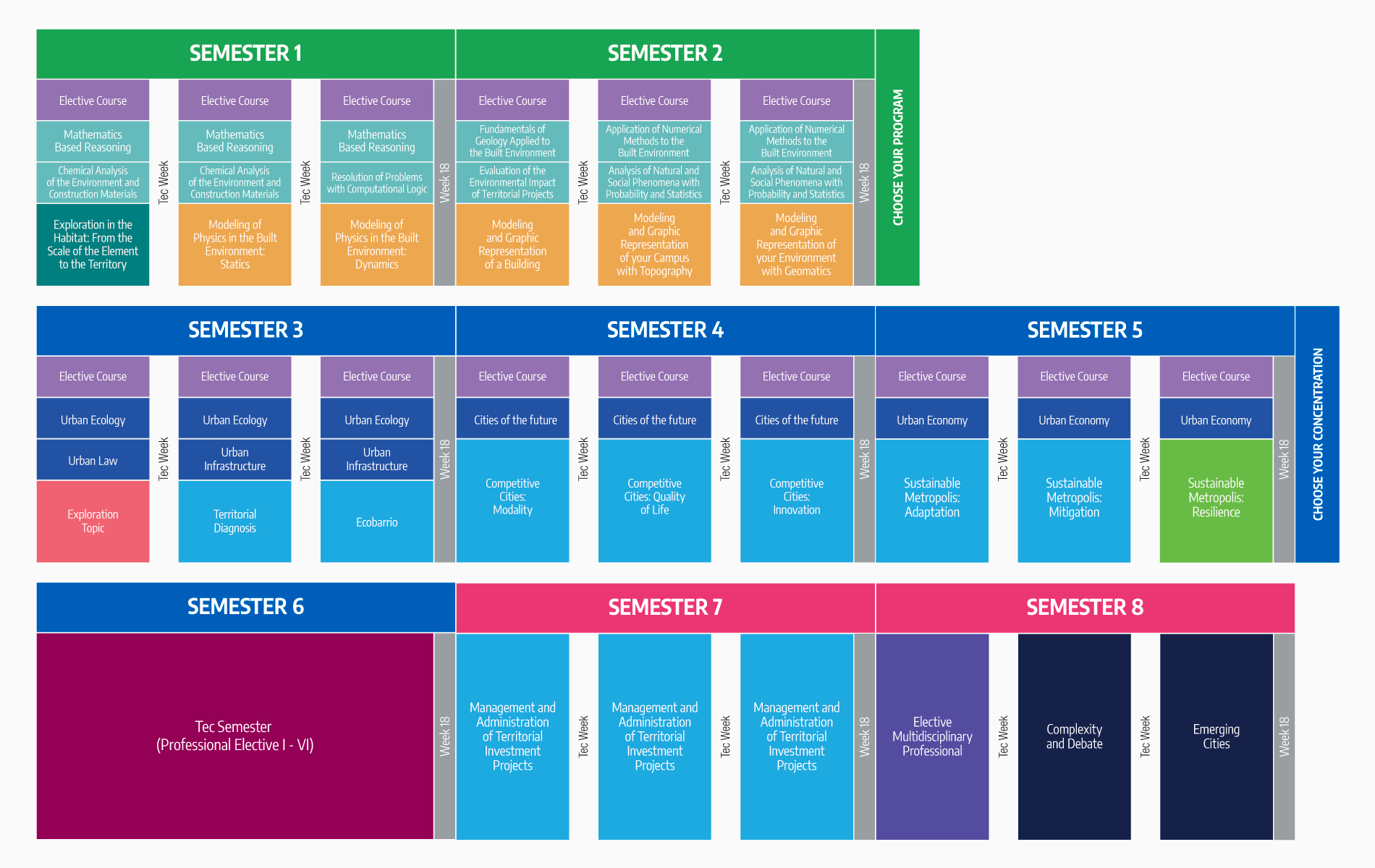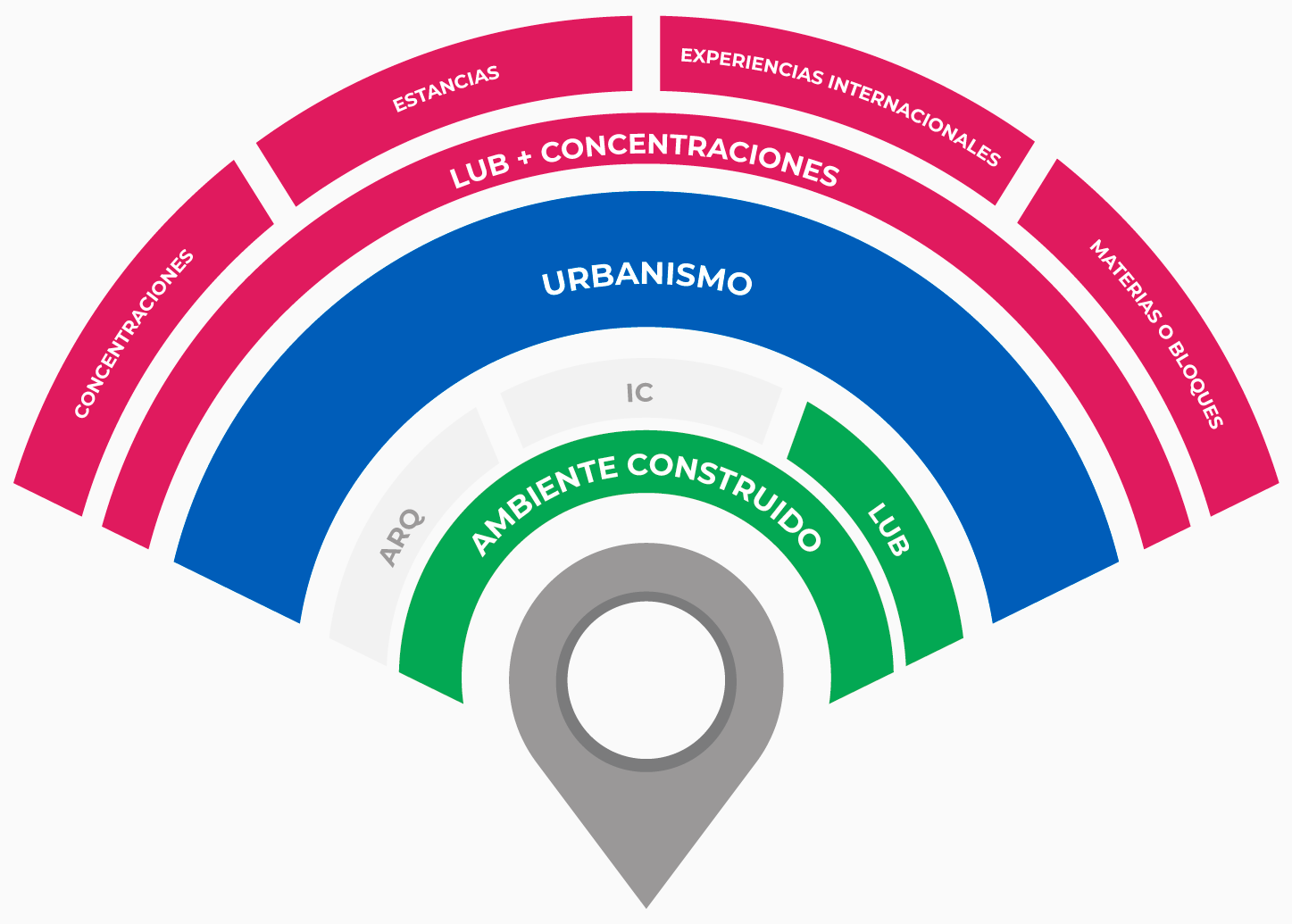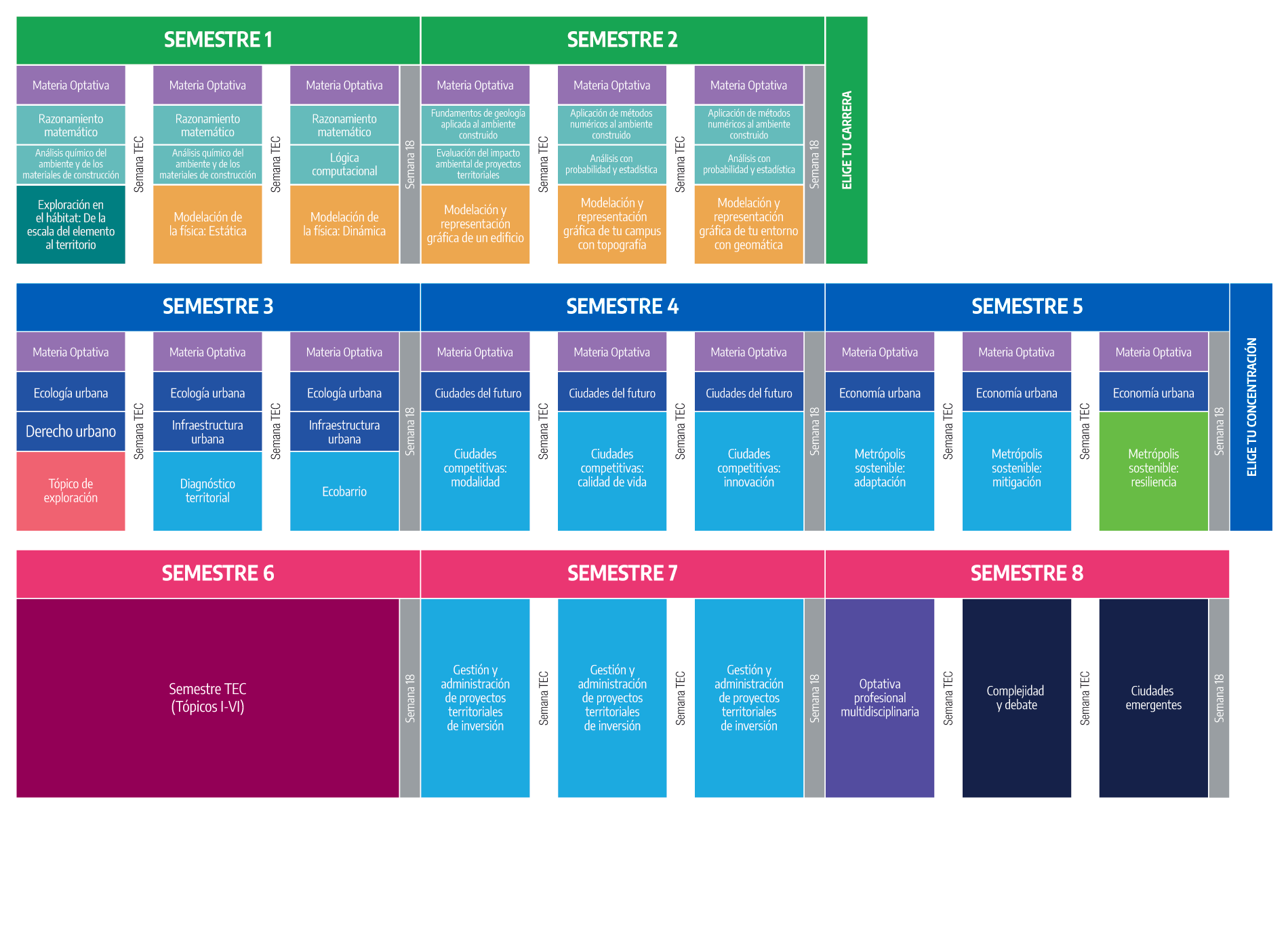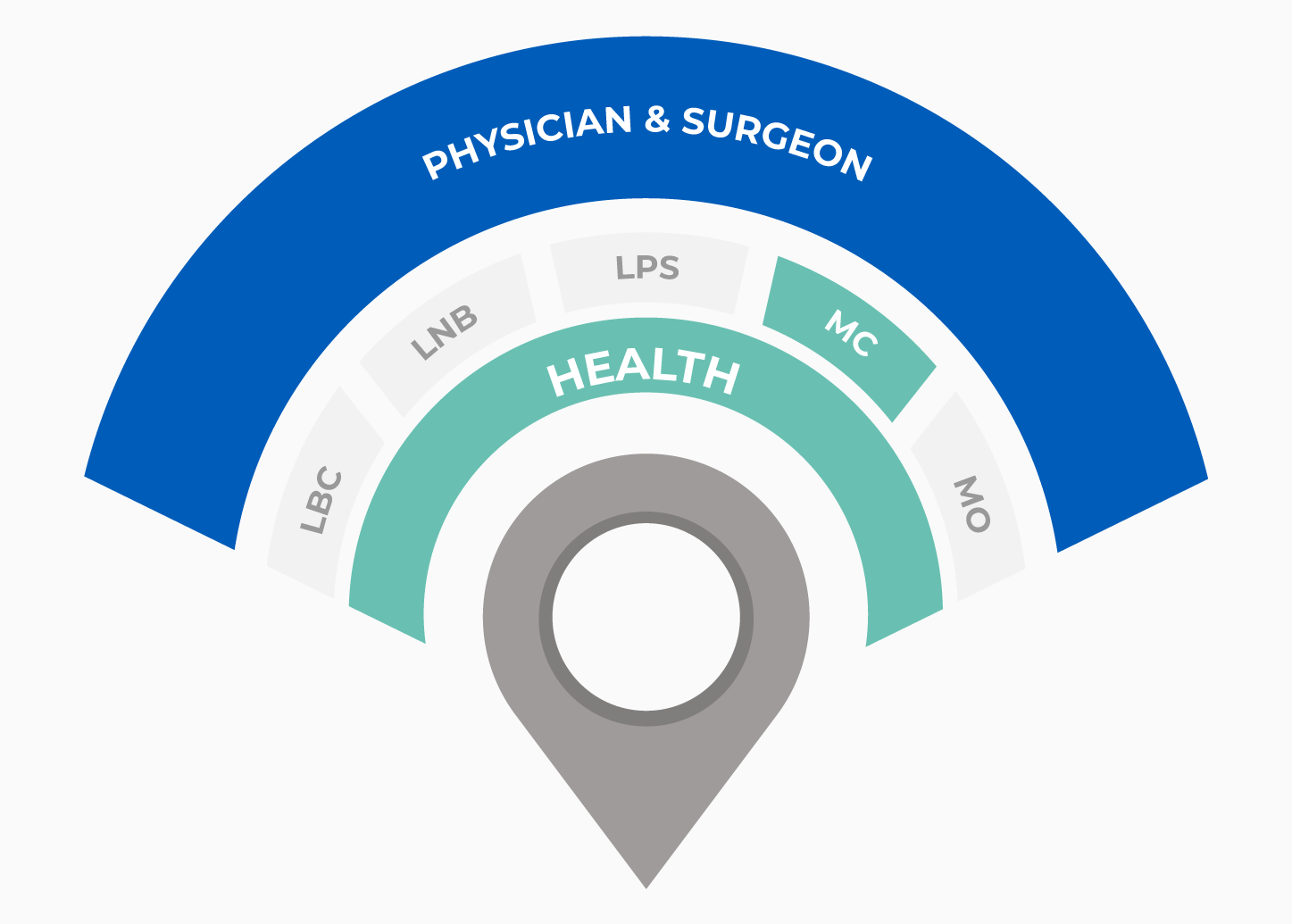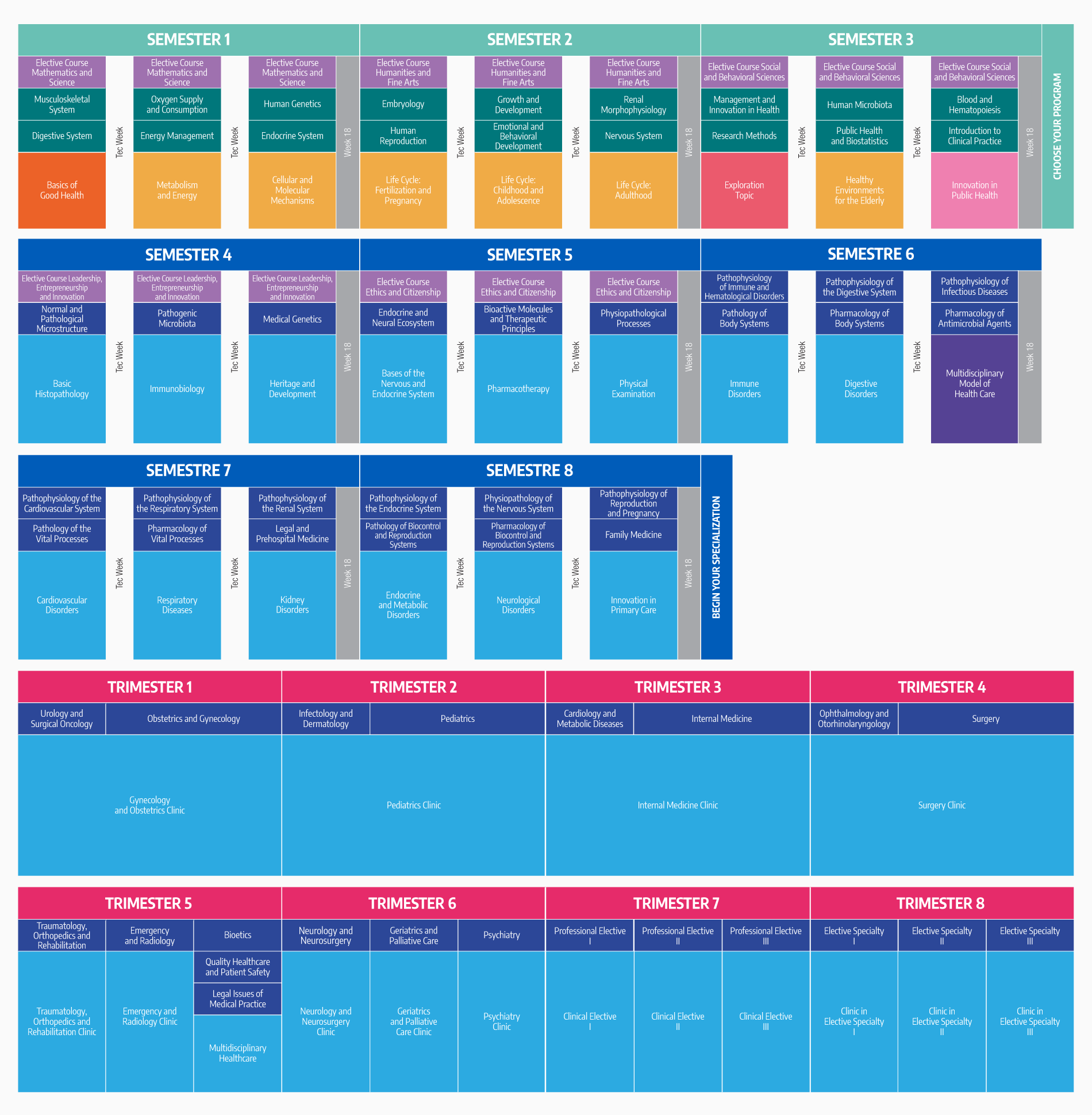Licenciatura en Psicología Clínica y de la Salud
La mente abre puertas y dirige tus emociones

Campo laboral
Al terminar la carrera de psicología, podrás participar profesionalmente en los siguientes entornos:
- Consultorio privado
- Clínicas, hospitales generales y de especialidad
- Equipos de investigación
- Entidades gubernamentales de salud y seguridad social
Is this right for you?
If you are aware of the importance of mental health, you are passionate in listening to, helping and guiding people. The Clinical Psychology degree is the right fit for you.
Las Tres Etapas del Modelo
Elige tu camino

 Exploración
Exploración
- Iniciarás tu expediente de competencias, mismo que irás alimentando a lo largo de tu carrera.
- Te formarás en los fundamentos específicos de tu área de ingreso.
- Participarás en un reto fundamental y en retos de exploración de tu área en los que interactuarás con compañeros de distintas carreras.
- Cursarás materias de educación general, de un acervo a elegir.
- Participarás en un reto integrador de todas las competencias previstas para desarrollarse en esta fase.
 Enfoque
Enfoque
- Te formarás en las competencias core, de tu carrera es decir, aquellas que la distinguen.
- Participarás en retos más enfocados, para reforzar lo aprendido y ampliar fundamentos.
- Contarás con los elementos para decidir entre profundizar o diversificar y armar tu plan de especialización en consecuencia.
- Las semanas Tec, los retos y vivencias universitarias enriquecerán tu expediente.
 Especialización
Especialización
- Has decidido entre diversificarte o profundizar aún más en tu carrera y lo harás al elegir una concentración o una estancia, por mencionar algunas de tus opciones. El semestre Tec es el espacio de tiempo flexible para iniciar.
- Desarrollarás competencias propias de tu especialización, cada vez más conectadas a tus pasiones, intereses y planes
- Al aprobar una concentración desarrollarás sus competencias y al graduarte serás candidata o candidato a obtener el Diploma de dicha concentración al cumplir con los requisitos establecidos.
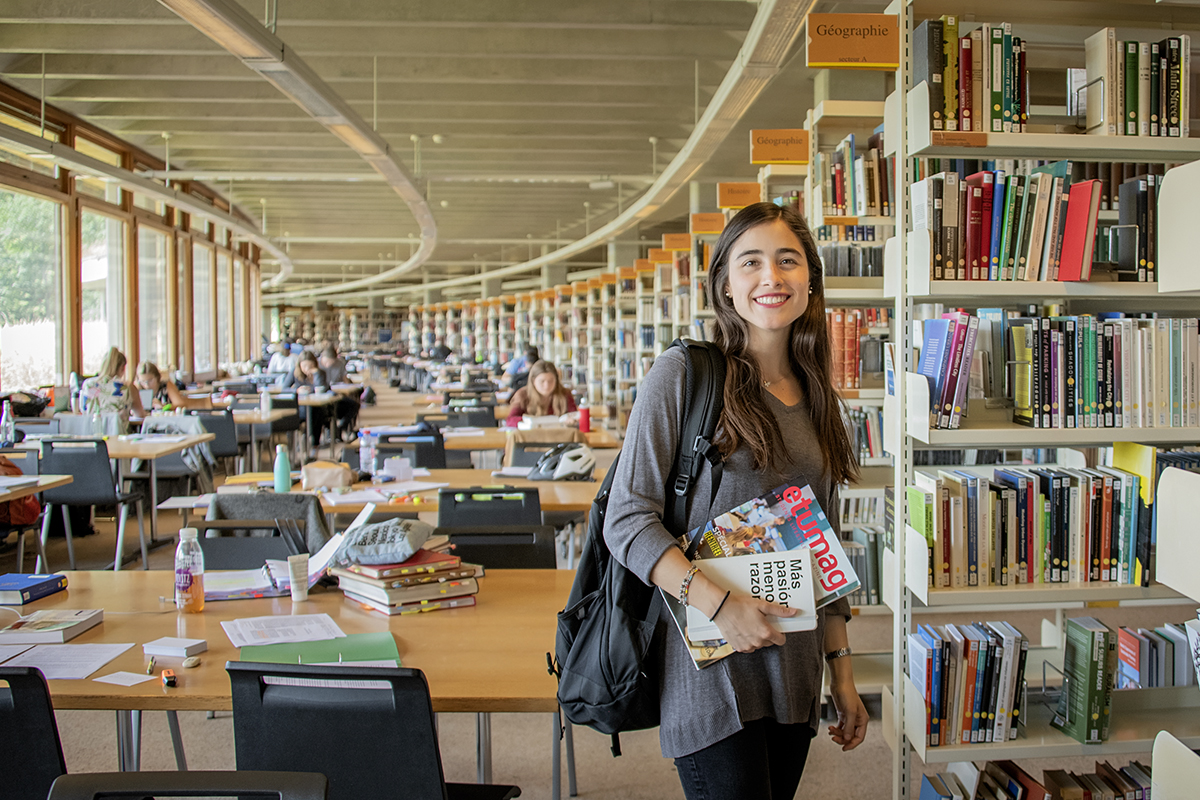
¿Cómo podrás especializarte?
 Concentraciones
Concentraciones
Especialízate con las diferentes concentraciones disponibles en el campus de tu elección, de acuerdo al perfil que quieres desarrollar.
 Estancias
Estancias
En las estancias participas en el desarrollo de proyectos específicos con empresas, organizaciones o grupos de investigación, en un contexto de inmersión total relacionadas con un área de especialidad. Se pueden realizar de manera local, nacional o internacional.
 Experiencias internacionales
Experiencias internacionales
Vive una experiencia fuera de México, que te permita ampliar tus horizontes y profundizar en los temas de tu interés.
 Materias o bloques
Materias o bloques
Elige unidades de formación que mejor se adapten a lo que buscas, las cuales te permitirán especializarte en lo que a ti te interesa.
Concentraciones
Disciplinar
Profundiza en tu área de estudio
Esta carrera no cuenta con concentraciones disciplinares
Transversal
Profundiza en otras áreas de estudio
- Familia empresaria, sostenibilidad y trascendencia
- Negocios conscientes
- Visión financiera para la toma de decisiones
*Estas concentraciones no son la oferta definitiva y su disponibilidad varía por campus.
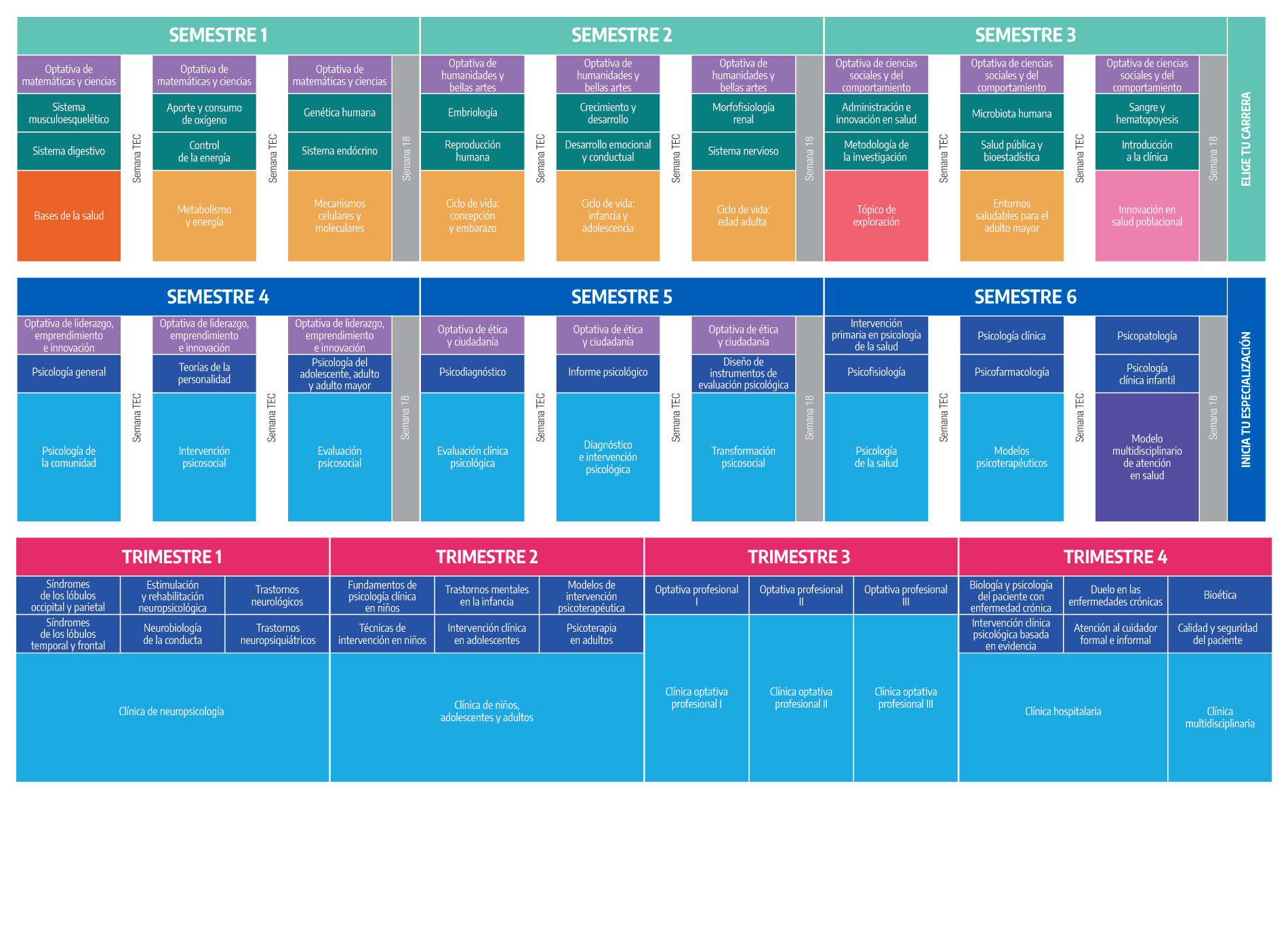
![]() Materia de educación general
Materia de educación general
![]() Materia de exploración del área
Materia de exploración del área
![]() Bloque introductorio (RETO)
Bloque introductorio (RETO)
![]() Bloque de exploración del área (RETO)
Bloque de exploración del área (RETO)
![]() Bloque optativo fuera del área (RETO)
Bloque optativo fuera del área (RETO)
![]() Bloque integrador del área (RETO)
Bloque integrador del área (RETO)
![]() Materia disciplinar
Materia disciplinar
![]() Bloque disciplinar (RETO)
Bloque disciplinar (RETO)
![]() Bloque integrador disciplinar (RETO)
Bloque integrador disciplinar (RETO)
![]() Bloque integrador final
Bloque integrador final
![]() Semestre TEC
Semestre TEC
| LPS |
| Remedial Semestral |
| Unidades de formación del semestre de introducción |
| Tercer Trimestral |
| Clínica optativa profesional I |
| Clínica optativa profesional II |
| Clínica optativa profesional III |
| Optativa profesional I |
| Optativa profesional II |
| Optativa profesional III |
